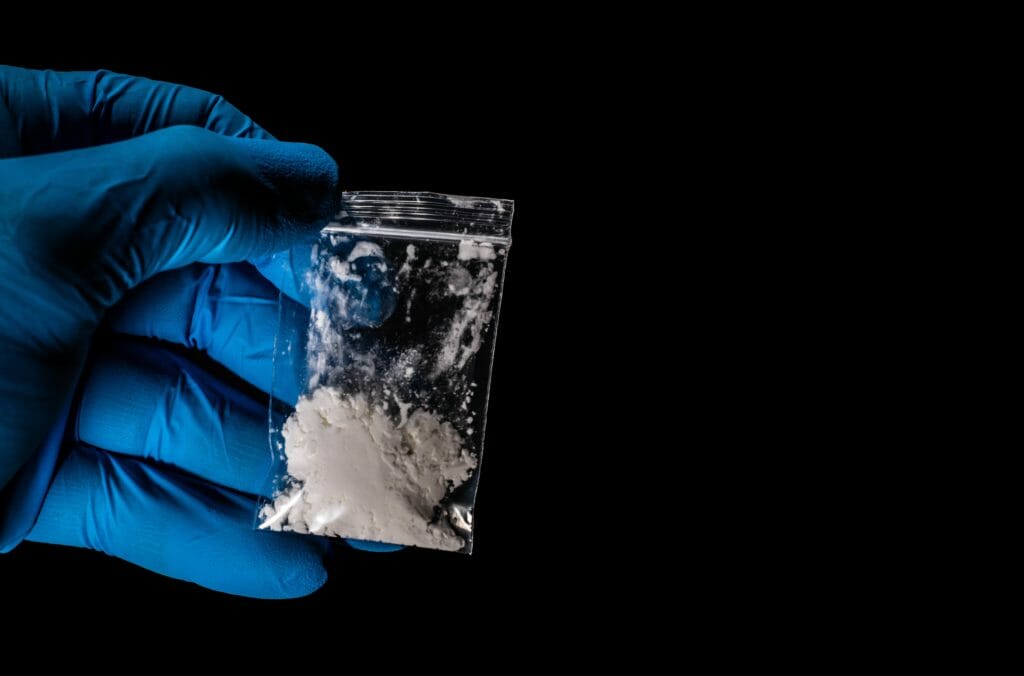How Dangerous and Addictive is Fentanyl?

Like many other drugs — and certainly other opioids, great confusion still exists among the public when it comes to the synthetic opioid fentanyl. For example, most people may not realize that fentanyl is not a recent development. It’s actually existed since Dr. Paul Janssen developed it in 1959. The average person may also be surprised to learn that fentanyl is regularly used for pain relief in hospitals across the country.
But perhaps the biggest misconception around fentanyl may just be how deadly it is when taken illicitly, an occurrence that is rapidly rising and one of the biggest contributors to the ongoing opioid epidemic.
What is Fentanyl?
As mentioned, fentanyl is a synthetic opioid, which means it is created in a laboratory and meant to produce the same effect as natural opioids like morphine and codeine. It’s important you understand that there are two very different types of fentanyl: pharmaceutical fentanyl (used in health care settings) and illicitly manufactured fentanyl. Though both are synthetic opioids, a physician prescribes pharmaceutical fentanyl to relieve extreme pain that patients might experience after surgery or when battling advanced-stage cancer. Medical professionals deliver it in a variety of forms, including through intravenous use, patches, tablets, nasal sprays, lozenges, and under the tongue.
When someone talks about the dangers of fentanyl, they’re referring to Illicitly manufactured fentanyl. The drug is sold and used illegally, most often in powder form or liquified and made into nasal sprays, eye drops, or added to blotter paper or edible candies. And while some may take illicitly manufactured fentanyl to help fight pain, many others use the drug to get high and reach a sense of euphoria.
According to the United States Drug Enforcement Administration (DEA), illicitly manufactured fentanyl is primarily manufactured abroad and smuggled into the U.S. for sale on the drug market.
What Are the Stats Around Fentanyl Usage and Overdose?
On the Fentanyl DrugFacts page on its official website, the National Institute on Drug Abuse reports that “Synthetic opioids, including fentanyl, are now the most common drugs involved in drug overdose deaths in the United States.”
We also know that both usage of and deaths related to illicitly manufactured fentanyl are soaring. Overdose deaths involving synthetic opioids like fentanyl in 2020 were 18 times the number that occurred in 2013. Worse, as updated numbers are announced, experts believe the COVID-19 pandemic will have accelerated death counts beyond previous reports.
We should also mention that fentanyl use and abuse is not just in adults. In fact, over 75% of overdose deaths occurring in adolescents in 2021 came because of the drug.
What Does Fentanyl Do to the Body?
As with other opioids like heroin and morphine, fentanyl attaches to receptors in the brain responsible for delivering sensations of pain and pleasure. This can cause a wide range of experiences for the user, including extreme happiness, reduction in pain, drowsiness, nausea, confusion, constipation, sedation, problems breathing, unconsciousness, and death.
How Does Fentanyl Use Lead to Addiction?
Fentanyl is an extremely potent and powerful drug (more on that in a bit). The way fentanyl use leads to addiction is not unlike other drugs in that it all centers on tolerance. The more someone uses the drug, the less likely they are to achieve the desired effect from the same amount — this is because their brain has grown accustomed to the drug, and its potency has diminished. That desire to ultimately feel the same outcome leads the person to not only continue using but to use a higher dose and/or more frequently than before.
Why is Fentanyl So Dangerous?
We’ve already touched on the number of overdose deaths related to fentanyl use, but let’s talk about some of the contributing factors driving that surge. One of the most significant reasons is its potency, with fentanyl clocking in at 50 times stronger than heroin and 100 times stronger than morphine.
To put that potency into context, one of the largest drug busts in U.S. history took place in 2018 in Nebraska, in which DEA agents seized 120 pounds of fentanyl. In reports covering the story, the DEA estimated that the amount of fentanyl seized was enough to kill 26 million people.
Another reason fentanyl use is so dangerous is that it’s often added to other drugs without the user’s knowledge. Because of its relatively low cost, drug dealers will lace cocaine, heroin, and methamphetamines with the synthetic opioid to deliver a more powerful high. Since it has no smell or taste, it’s nearly impossible to detect fentanyl without test strips — and even then, the test strip may fail to identify another potentially deadly fentanyl-like drug.
And even if someone knew they were taking fentanyl, they would have no way of accurately distinguishing if what they were using was a lethal dose. That’s because, as the DEA describes it, “Producing illicit fentanyl is not an exact science.” According to DEA analysis, more than 40% of the pills tested for fentanyl have at least 2 mg of fentanyl, an amount that could very well kill a user.
Factors like its strength and the unpredictability of a dose have led DEA Administrator Anne Milgram to call fentanyl “the single deadliest drug threat our nation has ever encountered.”
What Do You Do If You Have a Fentanyl Addiction?
The most effective way to handle and overcome fentanyl addiction is by seeking professional help from a treatment center before it’s too late. Once they stop using, a person addicted to fentanyl will likely experience drug withdrawal that can be physically, mentally, and emotionally grueling. For their own safety, it’s in the user’s best interest to begin the recovery process by undergoing a medically supervised detox like what we offer at Midwest Recovery Centers.
Clients at our residential detox have ‘round-the-clock care and guidance on how to navigate the physical symptoms and cravings that accompany withdrawal successfully. Once the detox process is complete, we encourage clients to enroll in our multi-phase treatment program, where we offer the building blocks of recovery, like group therapy, life skills training, peer support, and more.
If you or someone you love is struggling with fentanyl use and addiction, we can help. Contact us today.
Reviewed and Assessed by
Taylor Brown, B.A.Com., CADC
Tim Coleman, M. of Ed.



